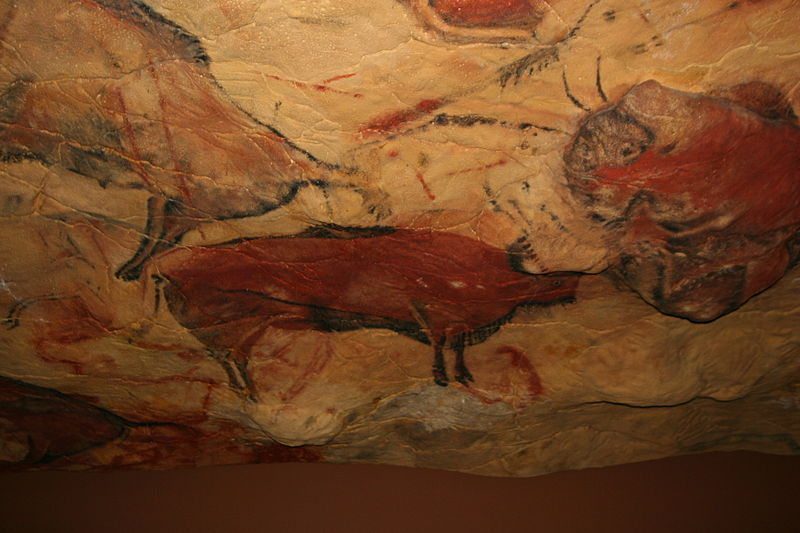A perennial topic in Spain – whether or not to allow the public access to fragile areas, which are nonetheless looked upon as part of the country's public patrimony. Plus there's the tourist revenue, of course. Altimira gets all the press, but the region has numerous caves in which prehistoric art can be viewed. Or not, depending on whether the local governments have the cash to build the facilities needed. The paintings in the Altimira cave are reproduced in the Deutsche Museum, Munich. Photo: Matthaias Kabel
Plans to reopen Spain's Altamira caves are stirring controversy over the possibility that tourists' visits will further damage the 20,000-year old wall paintings that changed views about the intellectual ability of prehistoric people.
The caves are the site of Stone Age paintings so magnificent that experts have called them the "Sistine Chapel of Paleolithic Art."
Carmen Drahl, C&EN associate editor, points out in the article that Spanish officials closed the tourist mecca to the public in 2002 after scientists realized that visitors were fostering growth of bacteria that damage the paintings. Now, however, they plan to reopen the caves. Declared a World Heritage Site by the United Nations' Educational, Scientific and Cultural Organization (UNESCO), Altamira's rock paintings of animals and human hands made scientists realize that Stone Age people had intellectual capabilities far greater than previously believed.
The article explains how moisture and carbon dioxide from tourists' breath, body heat and footsteps (which kick up bacterial spores) foster growth of bacteria on the cave walls. Those bacteria damage the precious wall paintings, which supposedly influenced great modern artists like Picasso. Drahl discusses the scientific controversy over limited reopening of the caves to tourism and measures that could minimize further damage to the paintings.
Source acs.org

The aim of art is to represent not the outward appearance of things, but their inward significance. – Aristotle















